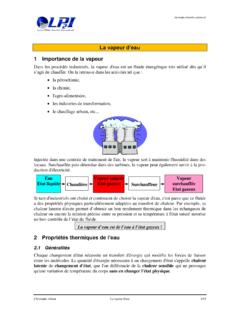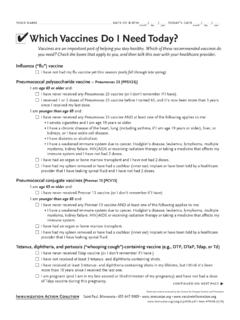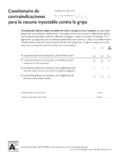Transcription of D. De La Matter ©2004 Swimming Pool Chemistry STUDENT ...
1 D. De La Matter 2004. Swimming Pool Chemistry STUDENT ACTIVITIES: Good News! Flinn Scientific Inc. has developed a classroom kit of experiments based on these activities. The Kit Catalog # is AP6599. Ordering information can be found at The maximum concentration encountered by students in these experiments is 10% of the concentration of chlorine in the most popular household bleach product. The STUDENT Pools are 1/100 as concentrated as household cleaners. Nevertheless, care should be taken to follow the described procedures to minimize classroom exposure to noxious fumes. The following classroom lab activities have been designed to explore issues related to the Chemistry of Swimming pools while minimizing STUDENT exposure to chlorine or nitrogen trichloride fumes. By using microchemistry techniques and by insisting on careful work, students can be taught to have appropriate respect without fear for these chemicals that are in widespread consumer use.
2 Calculations are simplified if the density of all solutions is assumed to be g/mL. Recorded masses of solutions in grams are interpreted as volumes. If digital balances are not available, students can record the number of drops added to the reaction plate, using calibrated pipettes. [Note: disposable pipettes are more reliable than syringes since syringe plungers often offer resistance and then slip, adding several drops to the reaction vessel instead of the one drop that was desired.]. SAFETY. These descriptions are NOT intended to be complete safety references for the procedures. Goggles MUST be worn, and the teacher MUST be aware of any STUDENT in the room with serious asthma, since exposure to chloramines has recently been implicated in triggering asthma. [See reference to European Respiratory Journal, Vol. 19, Number 4 Article by Dr. S. Burge & Dr. K Thickett. #new].
3 It is important that the teacher do the entire experiment and evaluate any safety issues before introducing it to the class. Remember that 25 experiments in STUDENT hands will give off more fumes than one experiment done by a teacher. Prior to the Experiments: Materials: Commercial liquid bleach ( sodium hypochlorite) Clorox Solid Methyl Orange dye Urea 1 M HCl solution Sodium Dichlorocyanuric acid Distilled water 1. Prepare a STUDENT stock solution of bleach (~2000 PPM) by diluting fresh commercial bleach 100 mL of bleach per litre. Use distilled water if possible. If the bleach has been unsealed for any length of time, the NaOCl concentration may be very low. If in doubt, standardize the stock solution using the iodide-thiosulfate redox reaction. [TIP: Making and testing their own pools will give students valuable practice in technique, but if class results are to be merged, prepare one or two litres of Pool water (~200 PPM) so that each group starts with identical chlorine concentrations.]
4 ]. 2. Prepare a methyl orange stock solution using g per litre of distilled water. (Tap water may react with the dye and change the concentration of this solution. Methyl Orange is not very soluble in water. This solution should be prepared well ahead of time. It is very stable if sealed in a flask.). 3. Prepare a stabilized chlorine stock solution using 2 g of sodium dichlorocyanuric acid ["Dichlor"] / litre (~200 PPM Cl). Seal the container. 4. Prepare ~250 mL of M Urea solution Activity #1: Create a Swimming Pool with a chlorine concentration of about 100 PPM and measure that concentration. STUDENT Materials: 1 plastic 35-mm film can per STUDENT Pool [available "free" from any film developer]. 1 dropper bottle of 1 M HCl 2 micro-pipettes 2 13x100-mm test tubes with stand 1 25 mL graduated cylinder About 5 mL of Methyl Orange solution Electronic balances (+/- g) can be shared among several groups.
5 If these are unavailable, the pipettes can be calibrated using a graduated cylinder to measure the average volume of a drop from a vertical pipette. STUDENT Method: Preparing the Pool 1. Given the concentration of the stock chlorine solution, calculate the volume of that solution required to prepare 20 mL of a 200 PPM Pool. (200 mg/ Litre . Convert: concentration in moles per litre* * 1000 = PPM). 2. Check that the amounts are reasonable with the instructor and proceed to prepare the Pool using the stock chlorine solution. 3. Using a plastic Beral pipette, withdraw the required volume of chlorine solution from a graduated cylinder filled with Stock solution. 4. Add the contents of the pipette to about 10-mL of distilled water in a 25 mL graduated cylinder. Add distilled water to the 20-mL. mark, then draw water into the pipette to mix any remaining Stock droplets with Pool water.
6 5. Pour the Pool water into your labeled plastic film can and snap on the lid. This creates a stable environment for the Pool if test reactions cannot be carried out in the same class period. Testing the Pool 1. Given the mass of Methyl Orange (MeO) dissolved per litre, calculate the concentration of the stock dye solution (MW =. g/mol). 2. Fill a test tube 3/4 full with the stock dye solution. 3. Draw up some dye solution into a clean plastic pipette. Invert the pipette and weigh it on an electronic balance (if available). and record the mass. Add about 20 drops of the dye to a small reaction beaker. Weigh the pipette again and record this reading. Store the pipette vertically in a test tube. 4. Carefully add about 5 drops of 1M HCl solution to the dye from a dropper bottle. 5. With a clean pipette, withdraw a small amount of Pool water. Invert the pipette, weigh and record its mass.
7 Slowly drop the water into the dye, mixing gently until a sharp color change occurs. Reweigh the pipette and store it vertically in a test tube. 6. From the masses of the solutions used, calculate the concentration of the chlorine in your Pool. (Assume 1 g of solution = 1 mL of solution). Calculations: Methyl Orange dye reacts 1:1 with HOCl (and OCl-), so knowing the conc. and volume of the dye, and the volume of Pool used to achieve the titration endpoint, it is simple to find the concentration of HOCl in the Pool. [Conc. in mol/L * * 1000 = PPM of chlorine ]. Activity #2: Effect of adding Urea on Chlorine Concentration In Swimming pools, protein and other nitrogen-containing molecules can react with hypochlorite to form chloramines. These chemicals result in " Swimming pool odour" and reduce the germicidal properties of the water. Materials: 1 plastic 35-mm film can per STUDENT Pool 1 dropper bottle of 1 M HCl 3 micro-pipettes 3 13x100-mm test tubes with stand 1 25 mL graduated cylinder About 5 mL of Methyl Orange solution Method: 1.
8 Obtain 20 mL of Pool solution from the instructor and add it to the plastic film can. 2. Obtain some Urea solution in a 13x100-mm test tube. 3. Fill a pipette with the urea solution and record its mass. 4. Add the assigned number of drops [0 to 30 drops] of Urea solution to your Pool then reweigh the Urea pipette. 5. Cap the Pool and label the container. 6. Allow the Pool to react for about 24 hours. 7. Test the chlorine level in your pool using methyl orange dye as in Activity #1. 8. Enter your results in a class table. 9. Plot the chlorine level (in PPM) against the amount of urea added to the Pools. Urea added to Pool 120. 100. Chlorine (ppm). 80. 60. 40. 20. 0. 0 1 Added Urea ( x10- 4 mol ). Activity #3 Compare the effect of Ultraviolet light on Pools with "stabilized" and "unstabilized" chlorine. Materials: A source of Ultraviolet light in a shielded container 2 translucent plastic 35mm film cans Stock solution of Standard Pool water (~200 PPM).
9 Stock solution of "Stabilized" Pool Water (~200 PPM). 1 dropper bottle of 1 M HCl 4 micro-pipettes 4 13x100-mm test tubes with stand 1 25 mL graduated cylinder About 5 mL of Methyl Orange solution Method: 1. Obtain 20 mL of standard Pool water and place it in a translucent film can. Label the can. 2. Obtain 20 mL of "stabilized" Pool water and place it in another translucent film can. Label it. 3. Using a clean Beral pipette, withdraw 1 mL of Pool water and test the chlorine level as in Activity 1. Repeat with the Stabilized Pool water. 4. Place the unsealed film cans side by side in a box where they can be exposed to UV light. (Not so close that the cans will be heated.). 5. Every 30 minutes, withdraw a 1-mL sample from each Pool and test the chlorine levels in both Pools. 6. When sufficient data has been collected, plot a graph of chlorine level vs. time for each Pool. 7.
10 Account for the differences in the solution behaviors as shown by the graph. Effect of UV Light on Chlorine Level 200. 180. 160. Chlorine Level (ppm). 140. 120. 100. 80. 60. 40. 20. 0. 0 100 200 300 400. Time (min.). Hypochlorite Dichlorocyanurate Good News! Flinn Scientific Inc. has developed a classroom kit of experiments based on these chemical ideas and the experiments suggested in the STUDENT Activities section in the next link . The Kit Catalog # is AP6599. Ordering information can be found at




